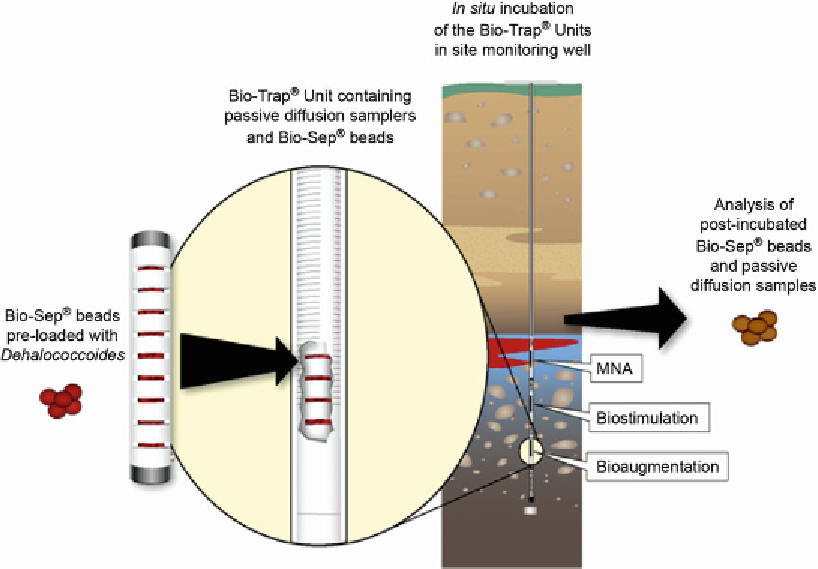Biomedical Engineering Reference
In-Depth Information
4.7.2.1
Sampling Devices
An increasingly popular technique for field testing is to use
in situ
sampling devices, such
as Bio-Traps
®
or Bio-Flo
®
devices (Microbial Insights, Inc., Knoxville, Tennessee). Bio-
Traps
®
, which can be deployed in monitoring wells (generally for 1-3 months), contain inert
beads that provide a large surface area for microorganisms to colonize. The microorganisms
present in the groundwater then form biofilms on and within the pores of the beads, similar to
biofilm formation on native aquifer materials. Once recovered from the well, DNA, RNA or
phospholipids can be readily extracted from the Bio-Trap
®
beads for analysis. This approach
can be used to characterize the microbial ecology in terms of classes of organisms (for example,
aerobic hydrocarbon degraders, nitrate reducers, sulfate reducers and reductive dechlorinators)
as well as specific degraders of importance, such as
Dhc
, and the presence of key genes.
These sampling devices also can be used to perform
in situ
bioaugmentation testing.
Devices can be amended with electron donors and/or bioaugmentation cultures and suspended
in monitoring wells, often with passive diffusion samplers to provide samples for analysis of
the contaminants and geochemical conditions (Figure
4.4
). After incubation in place - generally
for a few weeks - the samplers are recovered and analyzed for
Dhc
as well as specific
biomarkers.
This type of
in situ
testing can provide very valuable information for relatively little cost.
For example, if sampling an unamended or biostimulated site shows that
Dhc
and VC reductase
In Situ
Figure 4.4. Example of in situ sampling device (Bio-Trap
Unit) used to test benefits of bioaug-
mentation. Bioaugmentation cultures can be added on a solid matrix (Bio-Sep
®
beads) and left in
place for weeks to months before chemical and molecular biological analysis. Figure courtesy of
Greg Davis, Microbial Insights.
®

Search WWH ::

Custom Search